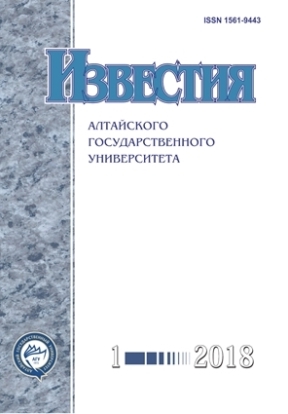Multivariate Data Analysis of Polygraph Charts for Assessment of Biophysical Characteristics
Abstract
In this paper, we propose tools for studying biophysical characteristics of a person by processing polygraph charts. We present the results produced by two methods of multivariate data analysis: the principal component analysis (PCA) and projection on latent structures (PLS). Data of biophysical state of a person during the polygraph testing - galvanic skin response (GSP), photoplethysmogram, blood pressure, and other biophysical characteristics – are processed and analyzed.It is shown that load diagrams are the preferable method to identify the relationship between the biophysical characteristics of a person. The principal component analysis provides an opportunity to assess minor changes in biophysical characteristics of a person and to take into account situational significant identifiers. They can attest to the fact that a possibly significant physical-chemical process runs in a human body.It is demonstrated that the projection on latent structures should be used to develop regression models that can constantly be used in polygraph testing.It is concluded that proposed methods of multivariate data analysis can help in an investigation of biophysical characteristics of a person using polygraph data. Also, the proposed methods are able to detect possible malfunctions in the responsible physical-chemical processes. The obtained results enable solving practical problems of information security matters, for example, the identification of an insider.
DOI 10.14258/izvasu(2018)1-05
Downloads
Metrics
References
Минакова Н.Н., Поляков В.В., Толстошеев С.Н. Методы технической и правовой защиты информации в сети Интернет. — Барнаул, 2015.
Марков А.С., Цирлов В.Л., Барабанов А.В. Методы оценки несоответствия средств защиты информации / под ред. А. С. Маркова. — М., 2012.
Поляков В.В., Трушин В.А. и др. Региональные аспекты технической и правовой защиты информации. — Барнаул, 2013.
Журавлева Е.В., Салита Д.С. Методы анализа многомерных данных : учебное пособие. — Барнаул, 2016.
Оглоблин С.И., Молчанов А.Ю. Инструментальная «детекция лжи»: академический курс. — Ярославль, 2004.
Леонтьев К.А., Панин С.Д., Холодный Ю.И. Оценка результатов тестирования на полиграфе методами регрессионного анализа // Наука и Образование : электронный журнал / МГТУ им. Н.Э. Баумана. — 2014. — №10.
Абраменко Е.А., Минакова Н.Н., Ушаков В.Я. Исследование свойств полиэтилена с наноразмерными наполнителями специальной обработкой изображения макроструктуры // Известия высших учебных заведений. Физика. — 2008. — Т 51, № 7.
Эсбенсен К., Кучерявский С.В. Анализ многомерных данных : избранные главы. — Барнаул, 2003.
Ben-Shkufiar G., Furedy J. Theories and applications in (he detection of deception. A psychophysiological and international perspective. N. Y. Inc.: Springer-Verlag, 1990.
Сошников А.П., Пеленицын А.Б. Сравнение различных систем количественного анализа полиграмм с помощью алгоритма ChanceCalc [Электронный ресурс]. URL: http://www.antey-group.ru/jurnal13.html (дата обращения: 05.12.17).
Copyright (c) 2018 Н.Н. Минакова, Е.В. Божич

This work is licensed under a Creative Commons Attribution 4.0 International License.
Izvestiya of Altai State University is a golden publisher, as we allow self-archiving, but most importantly we are fully transparent about your rights.
Authors may present and discuss their findings ahead of publication: at biological or scientific conferences, on preprint servers, in public databases, and in blogs, wikis, tweets, and other informal communication channels.
Izvestiya of Altai State University allows authors to deposit manuscripts (currently under review or those for intended submission to Izvestiya of Altai State University) in non-commercial, pre-print servers such as ArXiv.
Authors who publish with this journal agree to the following terms:
- Authors retain copyright and grant the journal right of first publication with the work simultaneously licensed under a Creative Commons Attribution License (CC BY 4.0) that allows others to share the work with an acknowledgement of the work's authorship and initial publication in this journal.
- Authors are able to enter into separate, additional contractual arrangements for the non-exclusive distribution of the journal's published version of the work (e.g., post it to an institutional repository or publish it in a book), with an acknowledgement of its initial publication in this journal.
- Authors are permitted and encouraged to post their work online (e.g., in institutional repositories or on their website) prior to and during the submission process, as it can lead to productive exchanges, as well as earlier and greater citation of published work (See The Effect of Open Access).








